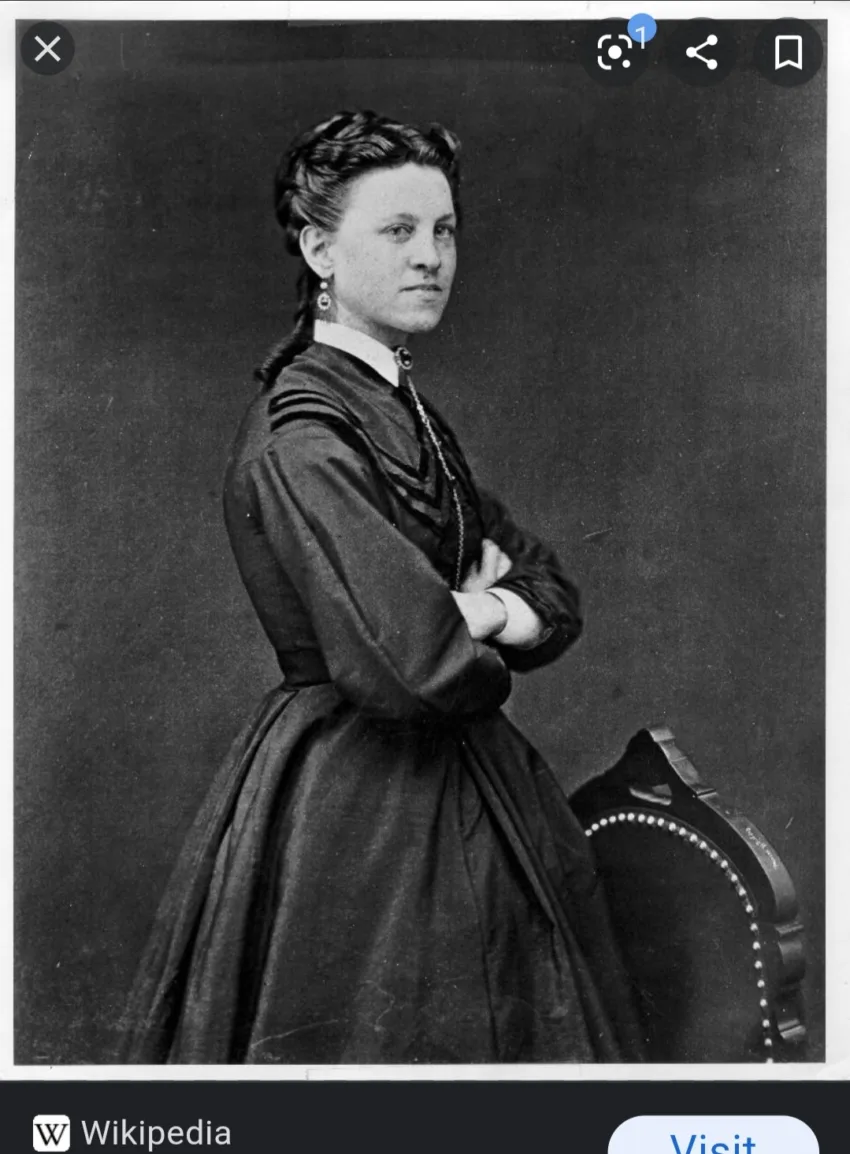1198: Idawalley Zorada Lewis
Lighthouse Keeper
Born: 25 February 1842, Newport, Rhode Island, United States of America
Died: 24 October 1911, Newport, Rhode Island, United States of America
Idawalley (called Ida) saved several people from drowning in separate incidents while serving as a lighthouse keeper in Newport, Rhode Island. When asked about her heroic exploits later in life, Ida was quoted as saying, “I did not think the matter worth talking about, and never gave it a second thought.”
Ida became involved with the Lime Rock Lighthouse because of her parents. Ida’s father was the keeper of the lighthouse from its inception in 1854 until 1857, when he became too ill to continue working. From 1857 to 1879, Ida served as an unofficial keeper alongside her mother (they had moved onto the grounds of the lighthouse with Ida’s father in 1856, when a permanent structure was built for the family). Ida’s mother was the official lighthouse keeper from 1872 (when her husband, Ida’s father, died) until 1879. From 1879 to 1911, Ida took over as the official lighthouse keeper.
Ida became a national sensation, not only because she was a working woman at a time when most stayed home, but because she also saved lives through her work. She met one of the presidents (Ulysses S Grant) and a vice president, suffragists Susan B Anthony and Elizabeth Cady Stanton visited Ida and Elizabeth bought photos of her*. They were proud of Ida for showing women could do a physically demanding job like a man. Ida was featured on the cover of hundreds of magazines and newspapers and received several accommodations and awards across the country. She was even known to sign photographs of herself for fans, like a modern-day celebrity. The Society of the American Cross of Honor nicknamed her “The Bravest Woman in America.” Ida is also the only woman, as of 2024, to have been awarded the Coast Guard’s Gold Lifesaving Medal, the highest honor the Coast Guard can bestow upon someone who has saved lives in the line of duty.
As part of her duty as light keeper, Ida was responsible for saving those shipwrecked on the shore near the lighthouse. As a result, she was also an expert oarsman and could man small craft. At one point it was even said that she could “row a boat faster than any man in Newport.” As thanks for her service, Newport dubbed 4 July 1869 “Ida Lewis Day,” and held a parade in her honor.
In 1870, Ida married a man named William Wilson, but little information about the match is known. They separated two years later, and Ida seemingly spent the rest of her adventurous life alone; not that she needed a man to keep her happy or fulfilled obviously.
Later in life, Andrew Carnegie, one of the richest men in America, granted Ida a monthly pension for life as thanks for her hard work and dedication to saving lives. Ida was awarded $30 a month, which she placed in a bank account and used to help support her brother—who also worked at the lighthouse.
Officially, Ida saved eighteen lives while on duty during her thirty-nine years serving the Lime Rock Lighthouse (although unofficial records put the count as high as thirty-six). Two of the people she saved were some soldiers shipwrecked in 1869. When the soldiers saw that Ida was their rescuer, one of them reportedly said, “It’s only a girl!” Luckily for him, Ida was more than capable of saving his life. In 1909, Ida also managed to save five girls whose boat was swamped and over-turned—she was sixty-eight years old at the time. She eventually became the highest paid lighthouse keeper in the country, earning $750 per year.
Ida died of a stroke while on duty, serving the lighthouse that had been a part of her life for so many years. Her brother found her unconscious on the floor, and even though a doctor was summoned, there was nothing he could do. Ida died three days later. Her brother believed Ida’s stroke had been caused by her hearing a rumor that her beloved lighthouse was about to be closed. Two years later, after public outcry and a fund started by a fifteen-year-old Newport girl, enough money was finally raised to place a tombstone marker over Ida’s grave that had been unmarked since her death.
In 1924, the light Ida had overseen for so many years was renamed the Ida Lewis Rock Light Station. The lighthouse also became the meeting place for the Ida Lewis Yacht Club in 1928. The lighthouse was officially discontinued (meaning was no longer deemed needed to help bring in ships, and therefor no longer requiring a keeper) in 1963.
Ida is considered a United States Coast Guard veteran because she worked as a part of the US Lighthouse Service, a pre-cursor to the United States Coast Guard (the Lighthouse Service merged with the Coast Guard in 1939). A street within Arlington National Cemetery, Ida Lewis Drive, was named in recognition of her service when it opened in 2018.
She was honored with a Google Doodle on her 175th birthday in 2017.
*Although it should be noted that Ida never publicly advocated for women’s right to vote or other Suffrage ideals herself.
Badges Earned:
Find a Grave Marked
Located In My Personal Library:
Uppity Women Speak Their Minds by Vicki Leon
Sources:
https://www.arlingtoncemetery.mil/Blog/Post/12407/Ida-Lewis-The-Bravest-Woman-in-America
http://www.ilyc.org/Default.aspx?p=dynamicmodule&pageid=86&ssid=100092&vnf=1
http://www.rhodeislandlighthousehistory.info/lime_rock_lighthouse.html
https://www.findagrave.com/memorial/7919955/ida-zorada-lewis

